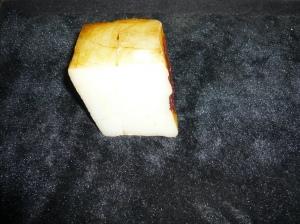 “Clothing and jewelry have 'Korean flow' and jade materials now have 'Korean flow.'†In an interview with reporters in the jade stone market in Yangzhou recently, the reporter discovered that a kind of white jade raw material produced in South Korea was called “Korean materialâ€. It also rose with the price increase of Hotan materials and Qinghai materials.
“Clothing and jewelry have 'Korean flow' and jade materials now have 'Korean flow.'†In an interview with reporters in the jade stone market in Yangzhou recently, the reporter discovered that a kind of white jade raw material produced in South Korea was called “Korean materialâ€. It also rose with the price increase of Hotan materials and Qinghai materials.
Henan Yushang brings “Korean Wave†into Yangzhou. “Han Yu is actually Chuncheon Jade.†Under the guidance of staff from the jade stone market in Yangzhou, the reporter went to the jade market to sell the shops with the most “Korean materialsâ€. The owner showed the reporter a piece of "Korean material" that had been cut.
"This should be loose and light," the shop owner told the reporter frankly. "Korean material" is also known as Korean white jade, or simply Hanyu. It is a mountain jade produced in the valley of the suburb of Chuncheon, South Korea. It is mostly yellowish-brown and brown, with a small amount of white. The feeling of fat is not very good. The chemical composition of “Korean material†is basically similar to that of Hotan jade. The hardness and density are slightly smaller than those of Hotan jade, and the hardness is about 5.5.
After reviewing the data, reporters found that there was a history of North Korea’s tribute to jade in China. In recent years, the old pits in South Korea have gradually been harvested, and the “Korean materials†currently appearing are all mountain materials. South Korea's white jade used the jade material market in Shifosi Town, Ping County, Henan Province as the transfer, and gradually flowed to Xinjiang, Beijing, Guangzhou, Jinan, Anhui, Shanghai, Yangzhou, Suzhou and Nanjing. The "Korean material" on the Yangzhou market is basically brought by Henan jade merchants.
Jade material prices to South Korea material surfaced In fact, as early as 10 years ago, sporadic "Korean material" began to appear in the Yangzhou market, but has long been not optimistic about. "Yangzhou people don't do it. It's gray and it's easy to fade."
According to reports, the difference between Korean materials and Qinghai materials and Russian materials is that the water head is smaller than Qinghai materials. After polishing, the glass luster is not strong, there is a slight waxiness, and there is no Russian material so dead. The density and hardness are inferior to Russian materials. However, judging from the appraisal results issued by the current domestic appraisal agencies of "Korean material," as with "Russian material" and "Qinghai material," the name may also be defined as Hetian jade (Nephrite).
The reason for the recent introduction of "Korean material" was related to the price increase of jade materials such as the new round of Hetian, Qinghai, and Russian jade that began in the second half of last year. The reporter learned that Hetian jade has become increasingly scarce in resources and prices have risen steadily. As a result, white jade, such as Qinghai materials and Russian materials, have also risen in price. This round of price increases has led some jade merchants to turn their attention to the long-term unremarkable "Korean material." A senior person from the Yangzhou Jade Times told the reporter that the original “Russia Jade Township†in Tongcheng, Anhui, has now become an important distribution center for Han Yu.
True or False is difficult to discern, and amateurs must be careful to understand that reporters now know that currently in the Yangzhou market, Han Yu is 100 yuan a kilo. Good color, a sense of fat is better, higher density, the price can be sold for a thousand or two thousand kilograms. However, industry sources told reporters that, in any case, Korean materials are still low-grade raw materials, the price is relatively low.
Industry sources said that because of its current low price, there may be some room for appreciation. However, it is difficult to distinguish between good and bad prices of "Korean materials." This puts a high demand on the people who play jade.
In addition, according to industry insiders, due to the "Korean jade" color green ash, some unscrupulous jade merchants fancy its grayscale, will be promoted as "blue and white material." Even some people use this grayscale to process it into ancient style objects such as Buddha statues, enamels, enamels, brands, and bracelets.
In view of the above points of view, experts suggest that although Han Yu has room for appreciation, he must be cautious, especially the layman.